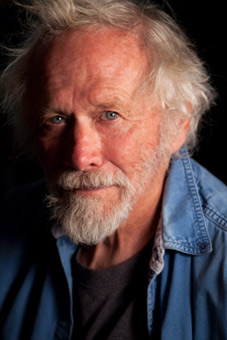Gerry Eskin:
Ceramic Forms and
Photographic Landscapes

In Dr. Gerry Eskin’s world, big is best. His work explores themes of monumental scale. His photographic panoramas depict spectacular geological formations and desert landscape vistas near Moab, Utah. His massive anthropomorphic vessels are informed by Middle Eastern sarcophagi. Together the ceramic pieces and photographs create an environmental installation evoking sacred mountain landscapes and their relation to burial rituals and the traditional spiritual function of ceramic forms.
Eskin constructed the ceramic vessels from slabs and coils; each is made from several hundred pounds of clay. In a very loose and gestural manner, Eskin ran his fingers and other tools over the wet clay to produce the textured surface. After drying for several months, the pieces were fired in either his eight-foot tall gas kiln or his anagama wood kiln.
Eskin shot the photographs during a week-long trip to the Moab desert in Utah in 2007. He worked to capture the texture and detail of the landscape. Using a tripod and panoramic head he took a series of shots that he later stitched together on the computer.
Prior to pursuing his artistic career full-time, Eskin taught marketing and marketing research at Stanford University and the University of Iowa. He was also co-founder and director of Information Resources, Inc., one of the world’s leading providers of marketing information and software. Upon retiring in 1995 he immersed himself fulltime in his long-standing passions: ceramics and photography.
Eskin was an avid collector of both contemporary and prehistoric ceramic pottery from around the world. He was an adjunct professor of studio art and art history at the University of Iowa. He served as a chairman of the advisory board of the National Council on Education in the Ceramic Arts, as a board member of the Museum of Arts and Design and the University of Iowa Art Museum Advisory Board. He maintained studios in Iowa City, Iowa and Aspen, Colorado.